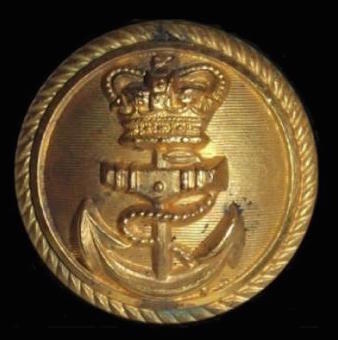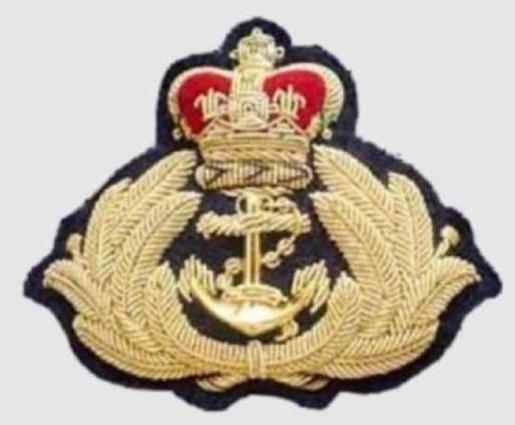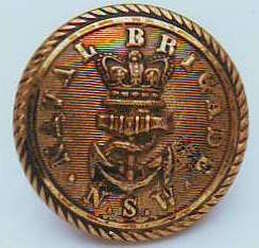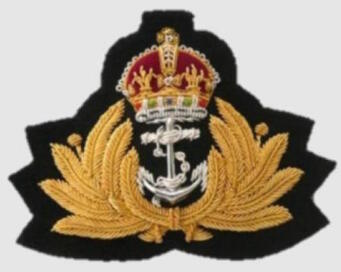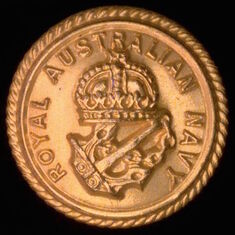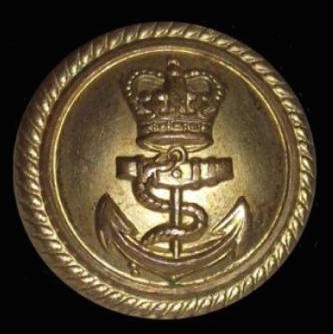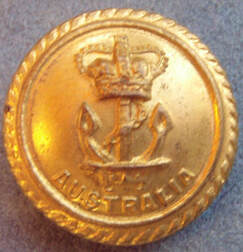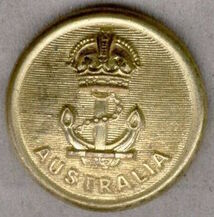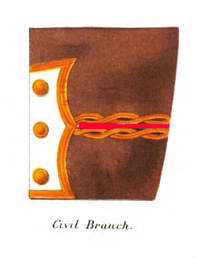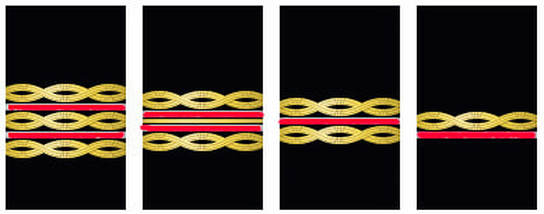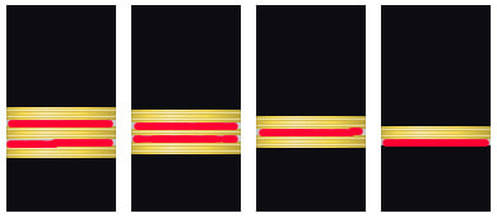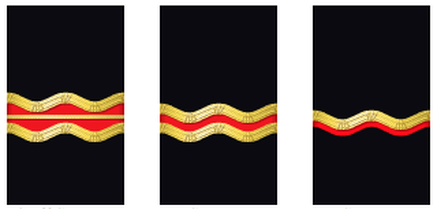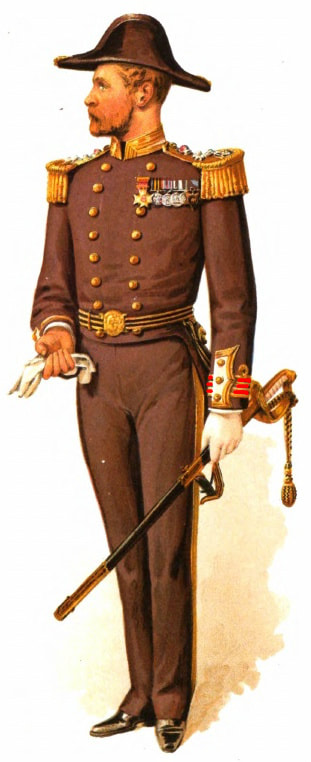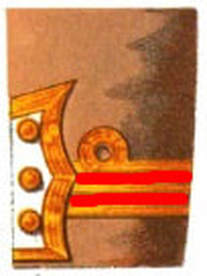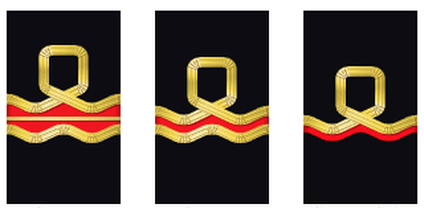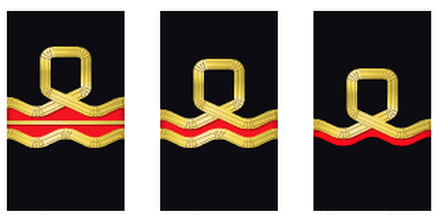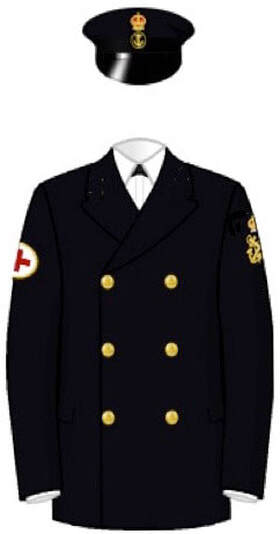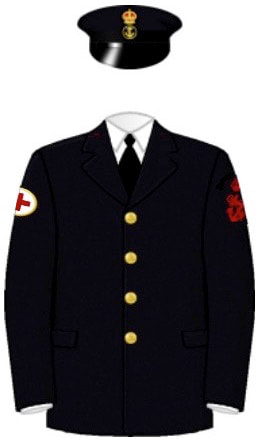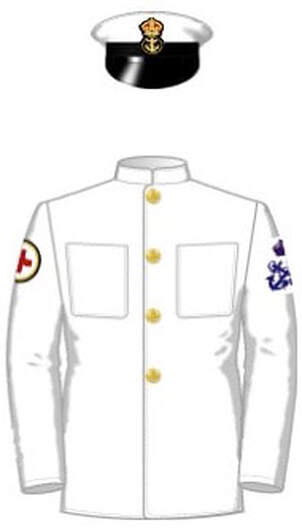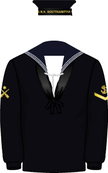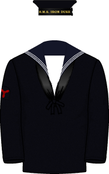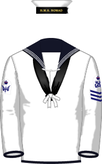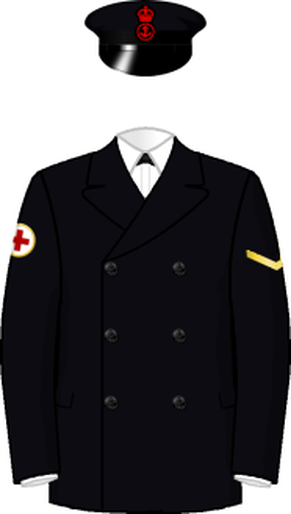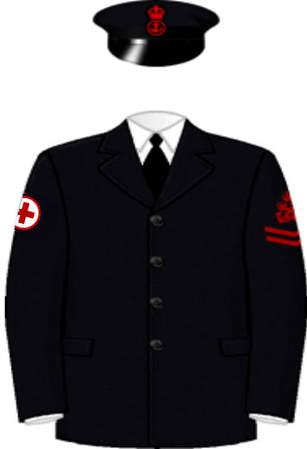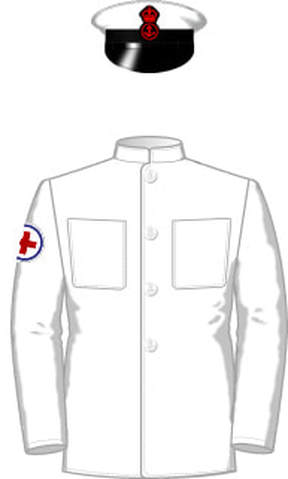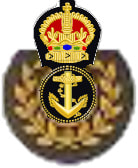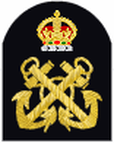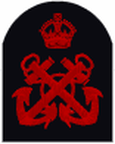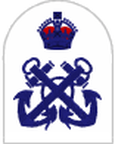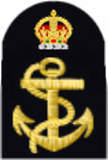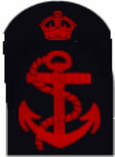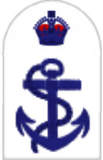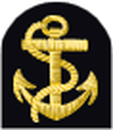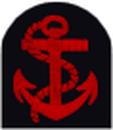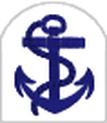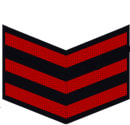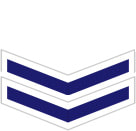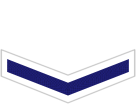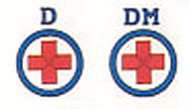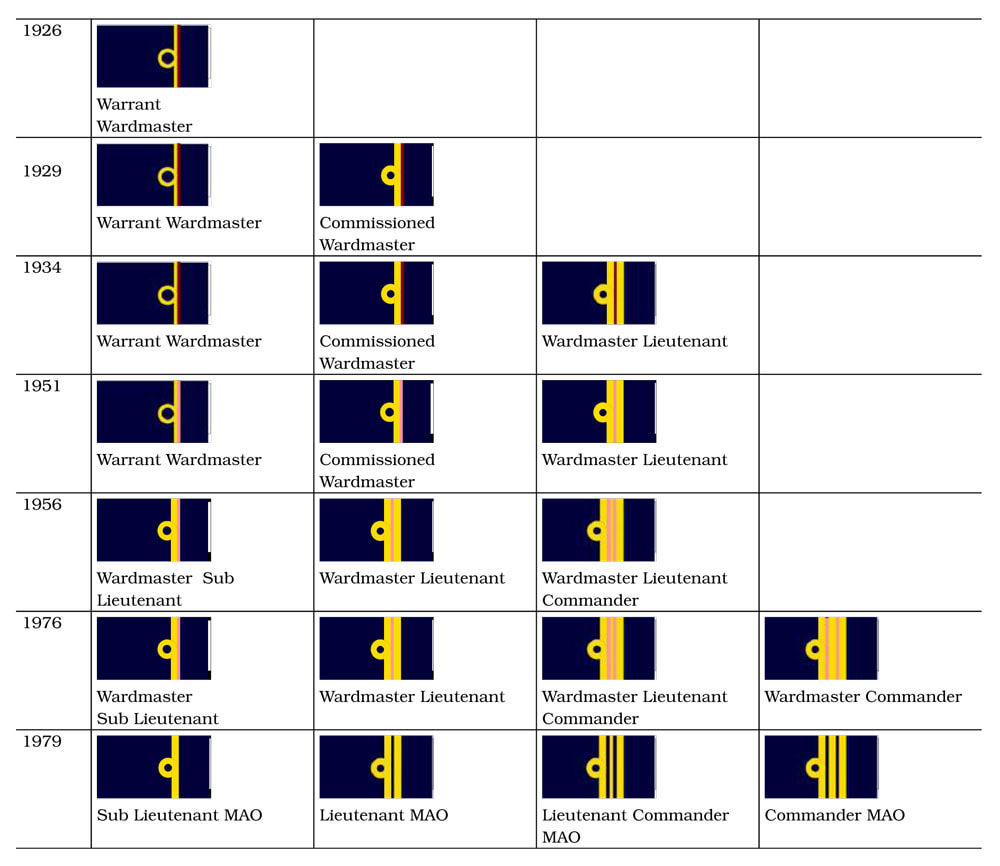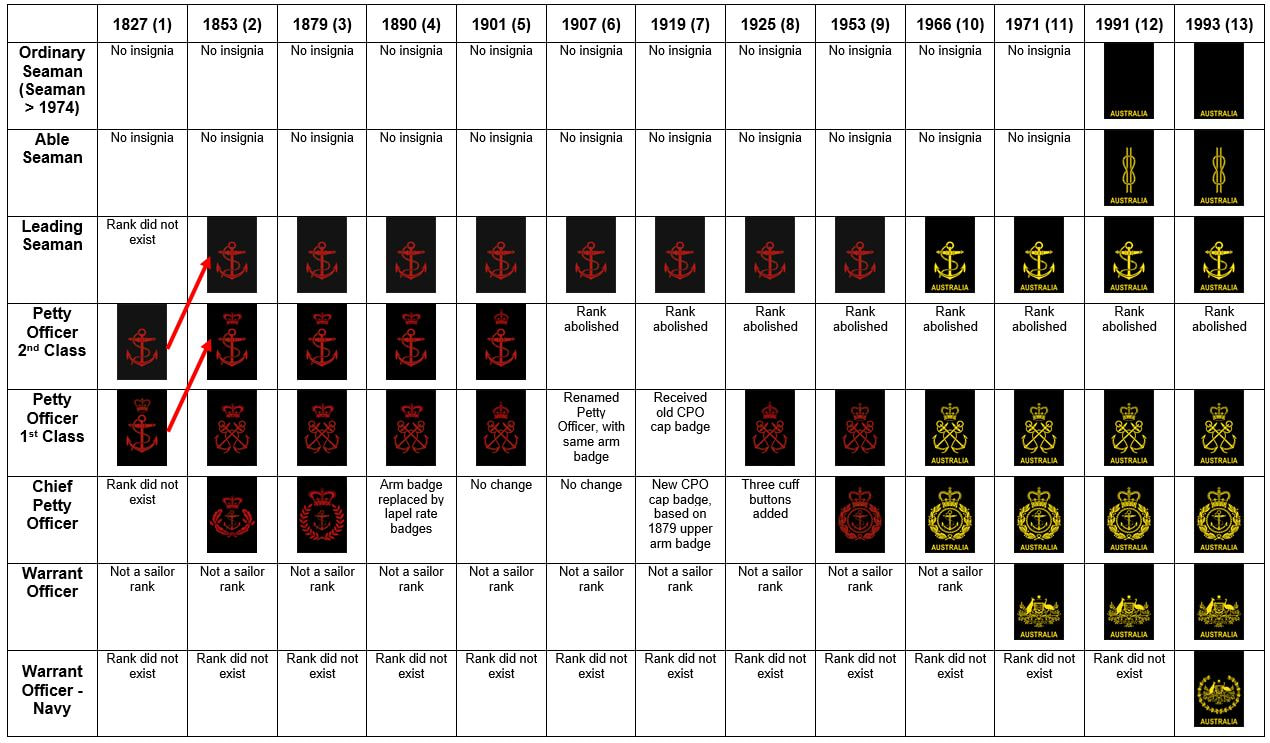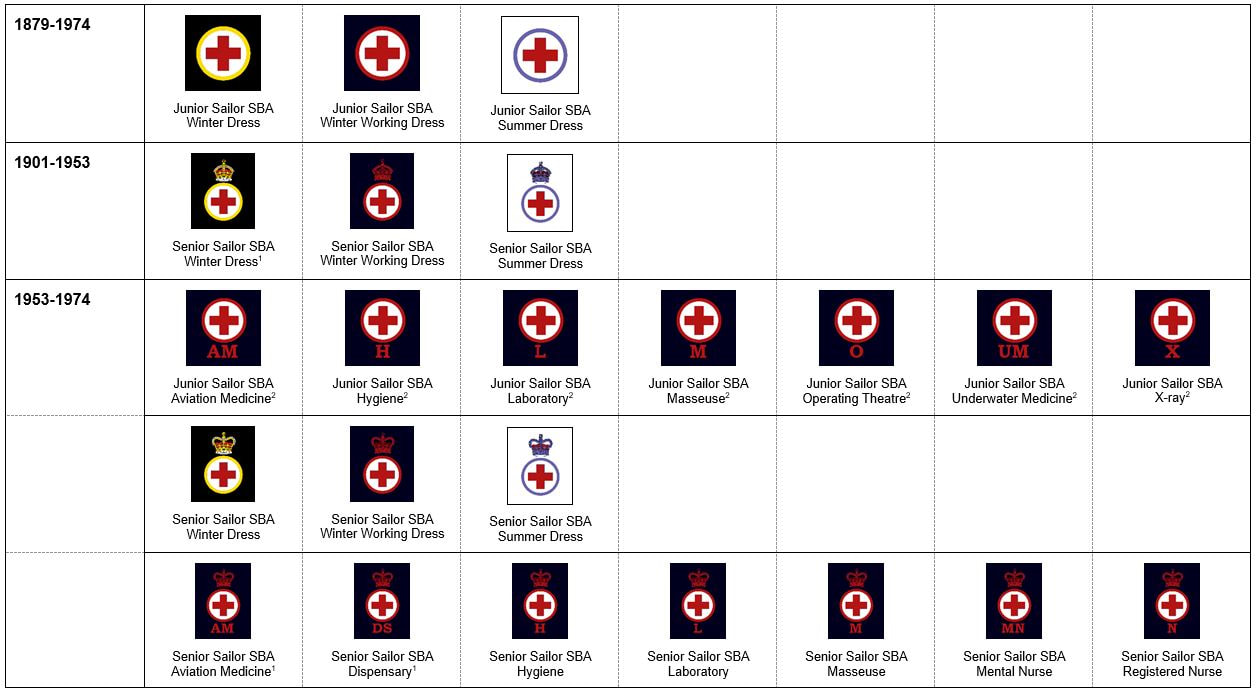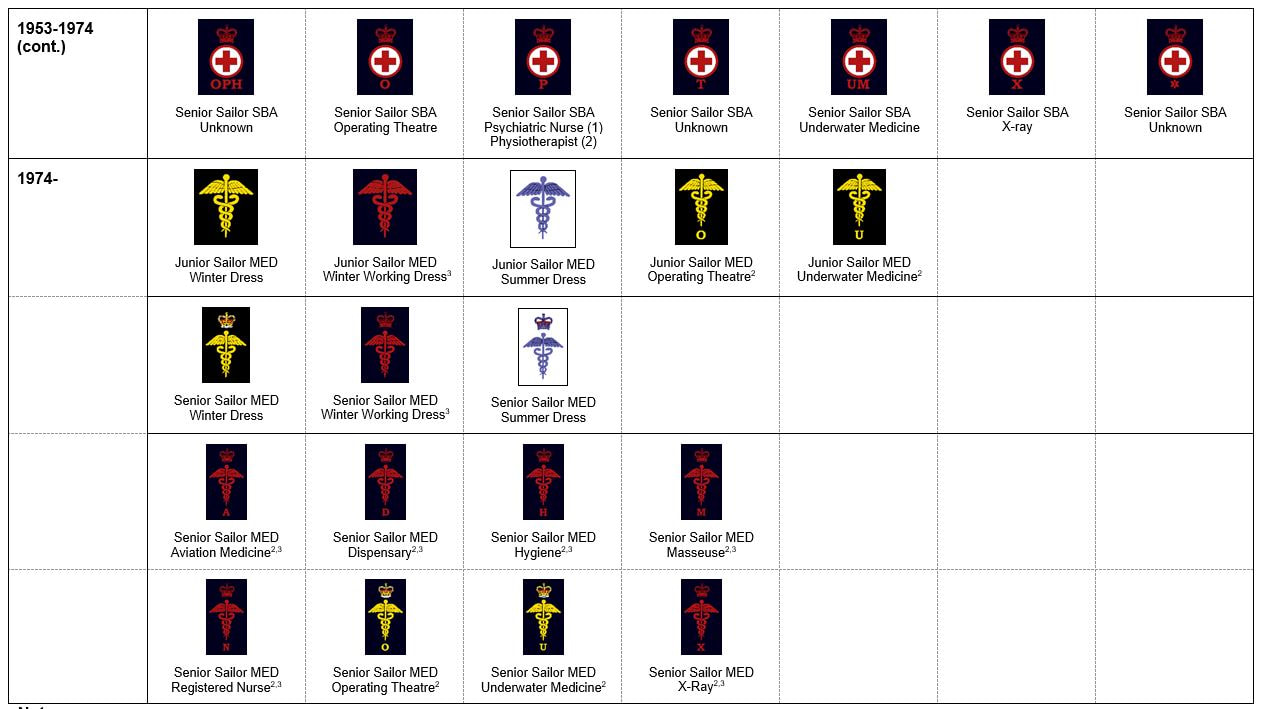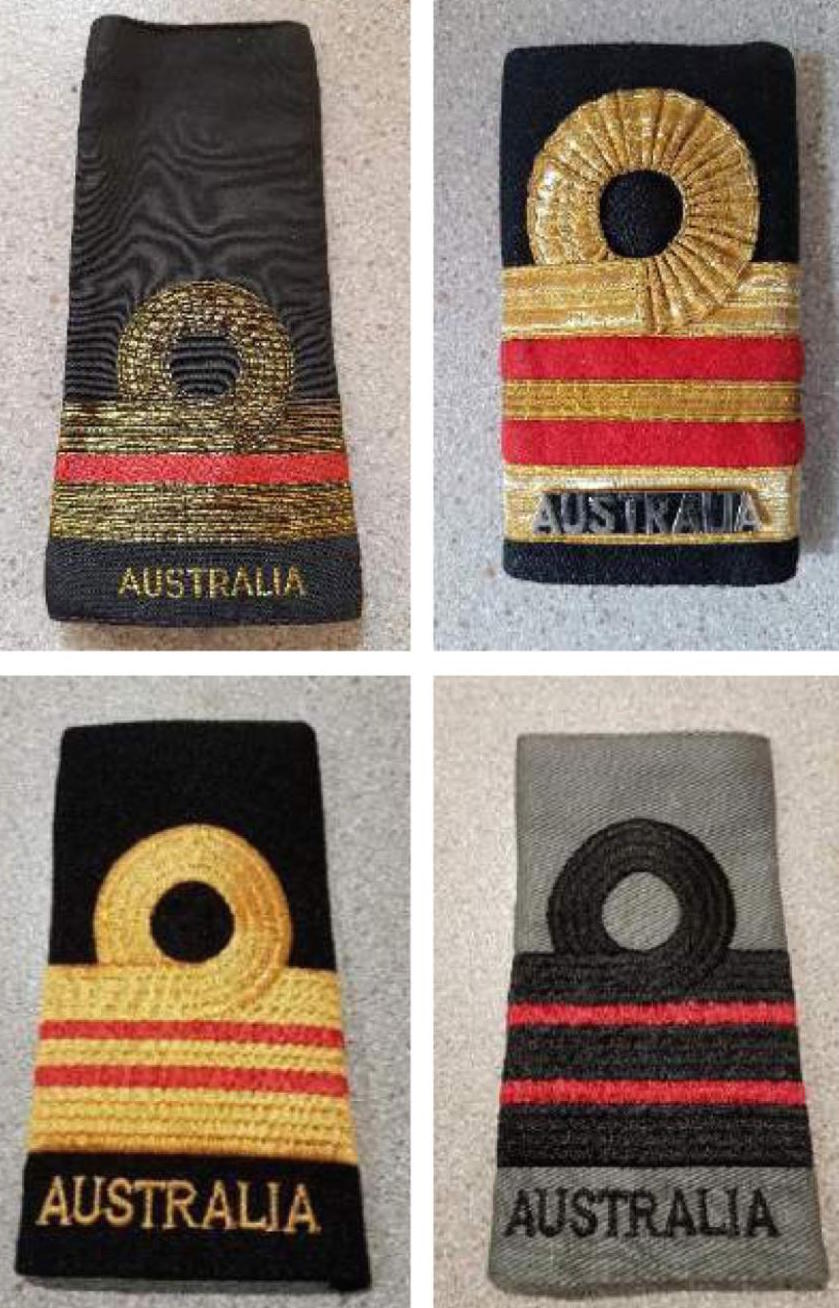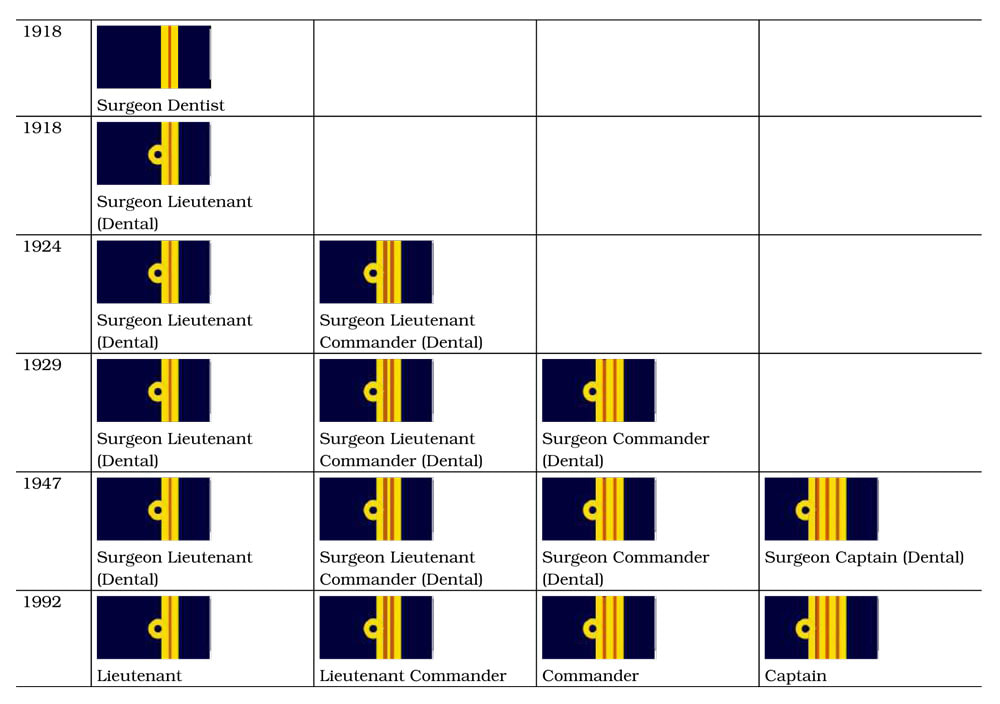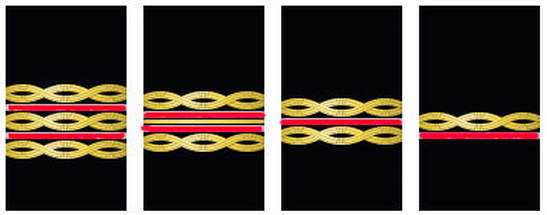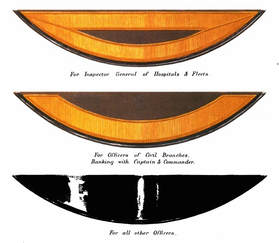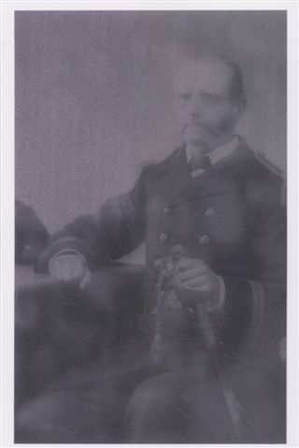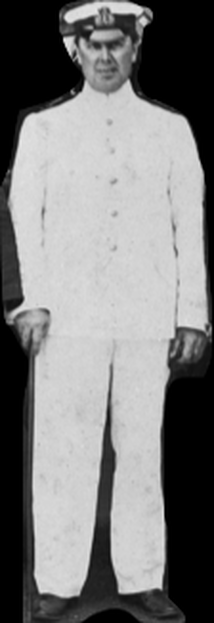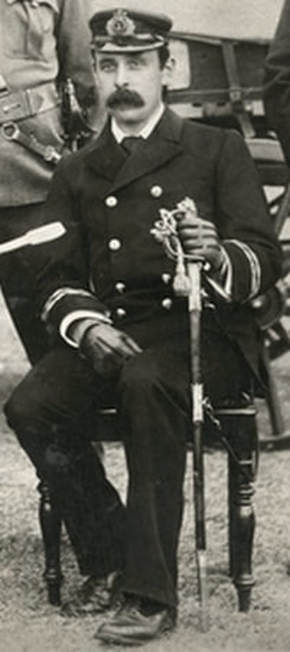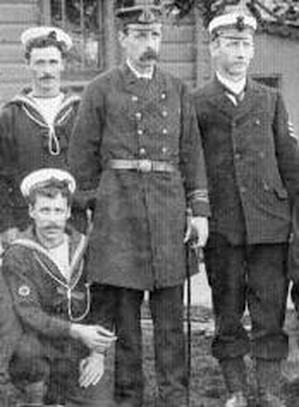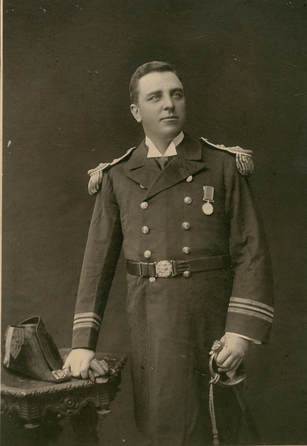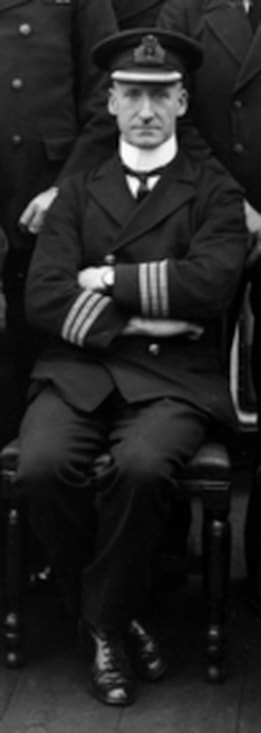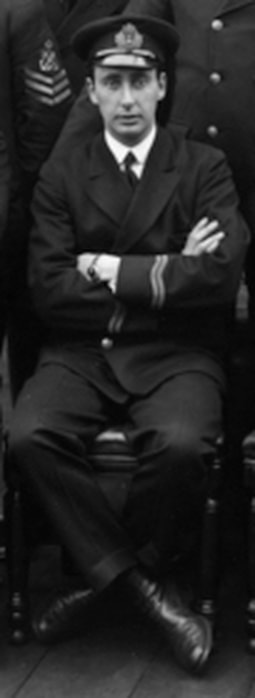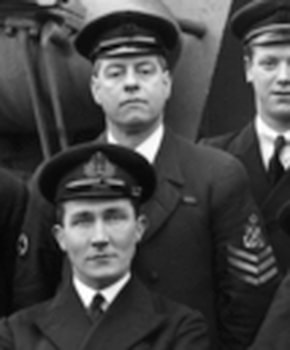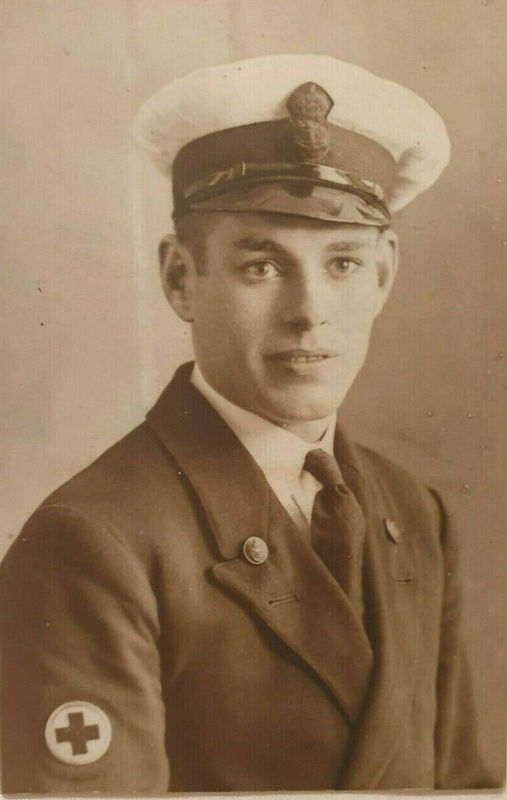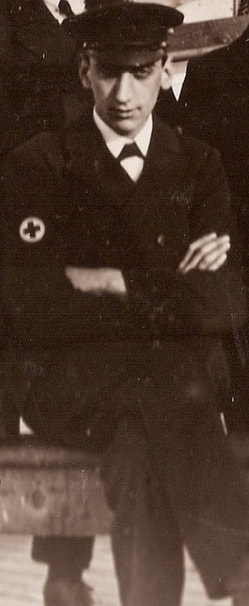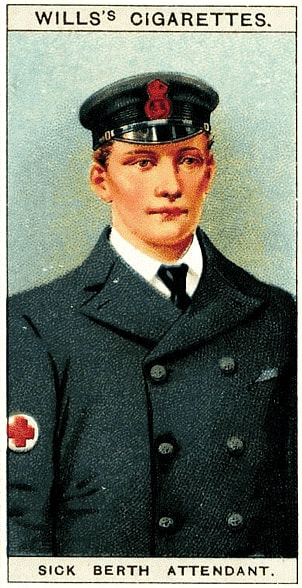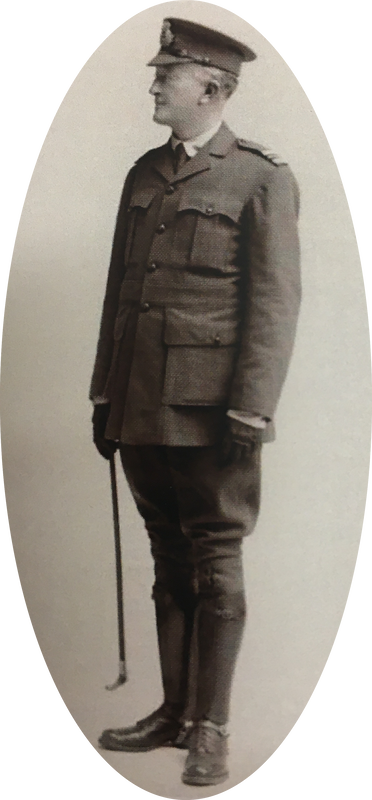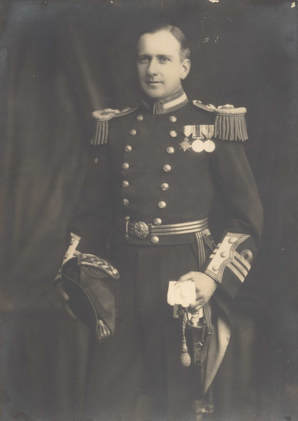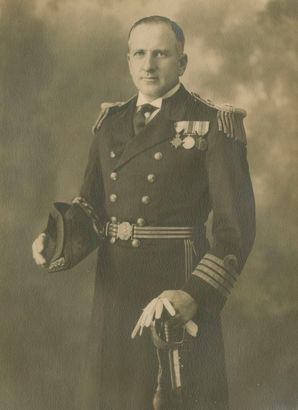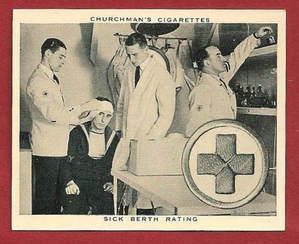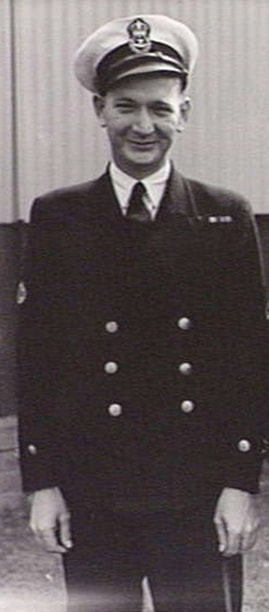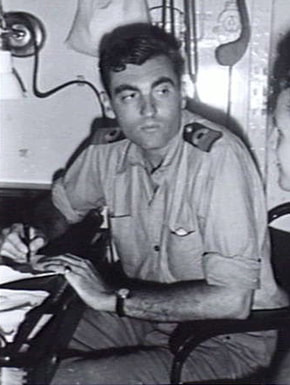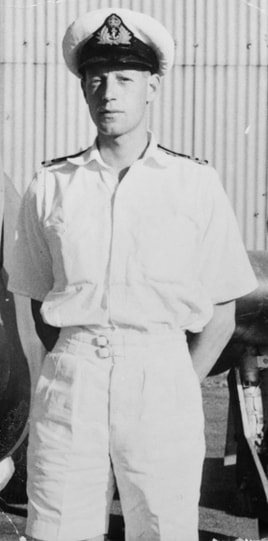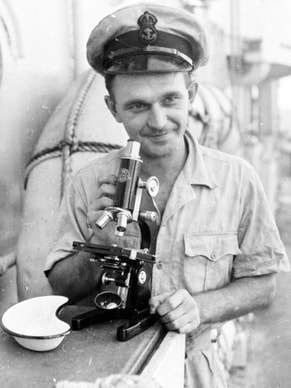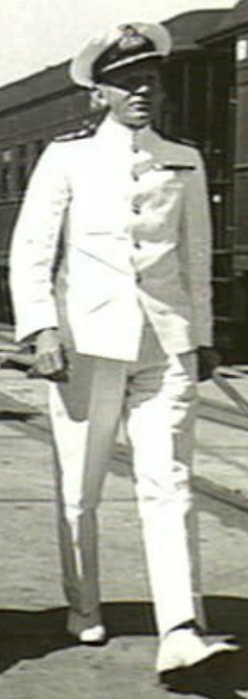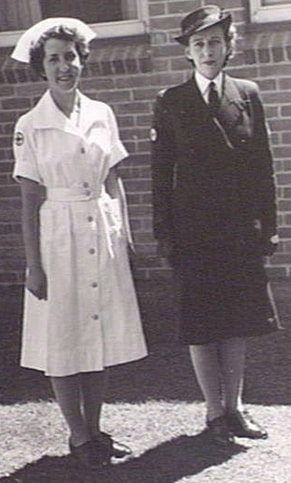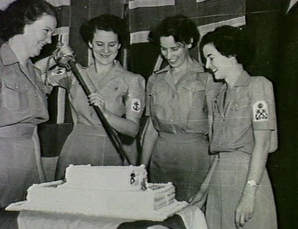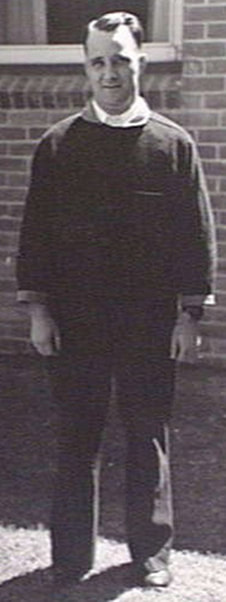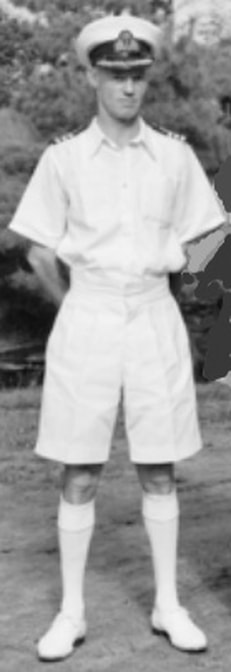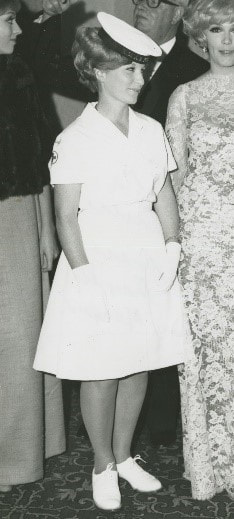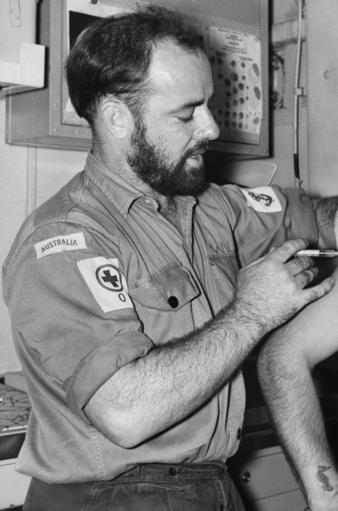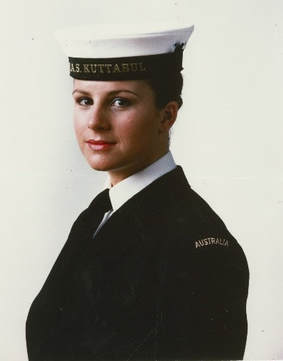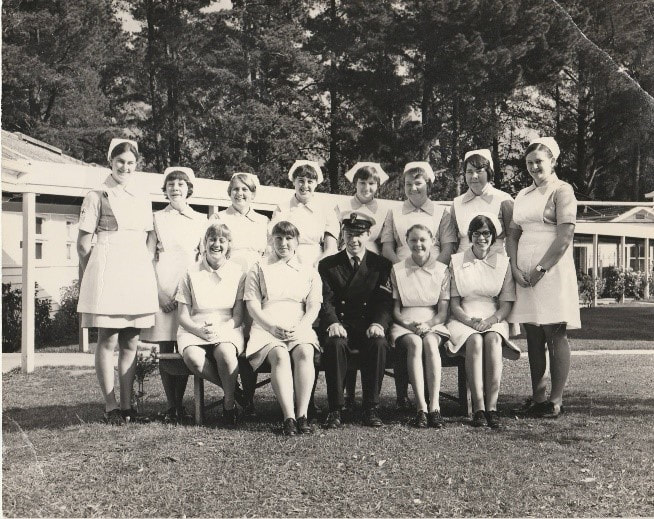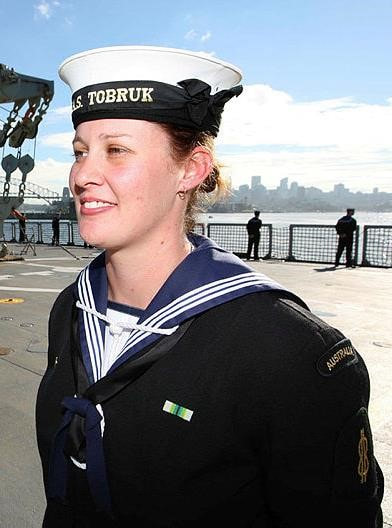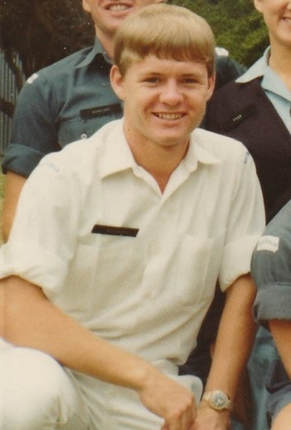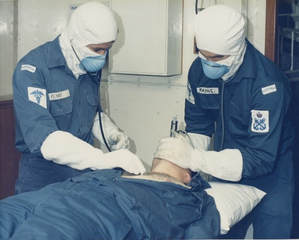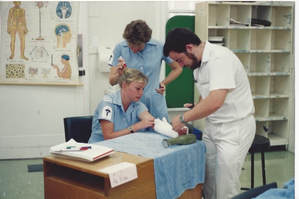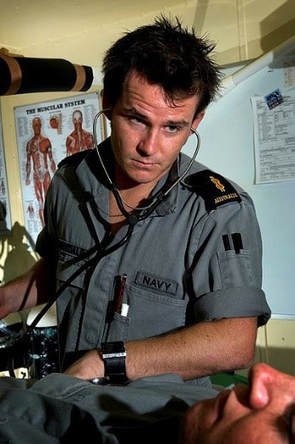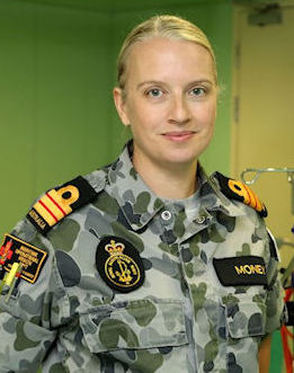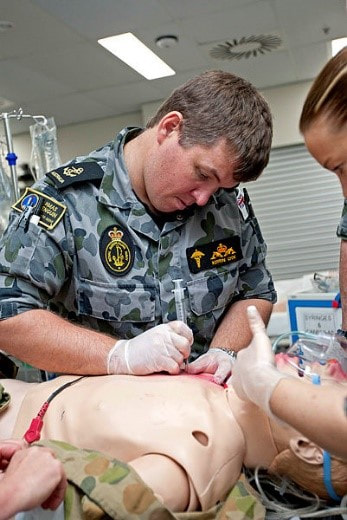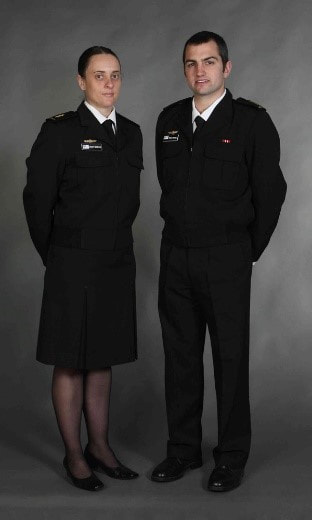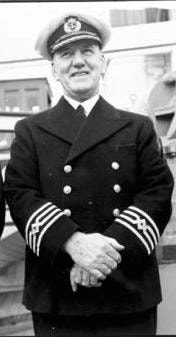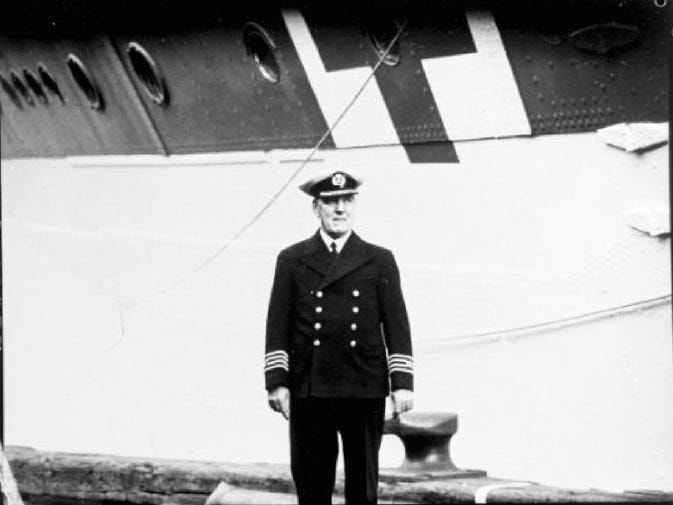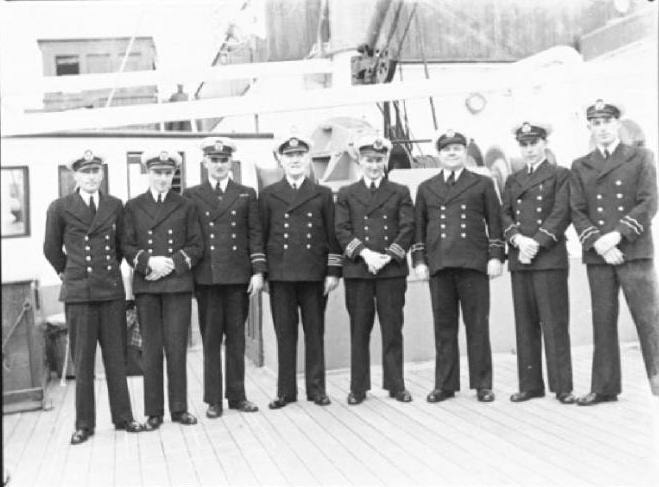royal australian Navy uniform
Royal Australian Navy Uniform Development
Australian Naval Uniforms followed the Royal Navy (RN) Dress Regulation pattern, which was standardised in 1857. Up until the mid 18th century officers had a free choice in what they wore while serving. That changed in 1748 when the Admiralty issued an order [decree] that officers adopt a uniform. This was deemed necessary to ‘Distinguish the Rank of Sea Officers’ and to given them ‘better credit and figure in executing the commands of their Superior Officers…’
The RN adopted a plain blue "undresss" coat for every day use in 1795, and epaulettes were offically introduced. Junior ratings wore low crowned cocked hats between 1720 and 1820. However the orders concerning uniform regulation were not specific enough and officers had plenty of leeway in how their uniform was cut and measured. This meant a great variance amongst the officers of the Royal Navy during this period which was the cause of some consternation to the Admiralty.
In 1825 the Admiralty finally issued illustrated regulations for RN officers. These regulations were in some detail with regard to denoting rank, swords, hats, and footwear, and by 1846 all Officers wore epaulettes. During this period the Royal Navy saw further refinement of officers’ uniforms by further modifications to the denoting of ranks and uniform coat.
The RN officers peaked cap came into use about 1840 to supplement the Cocked Hat, the peaks of senior officer becoming embroidered in gold as part of their rank insignia in 1856. The embroidered peak was changed to an oak leaf design in 1860. When this peak cap first came into use it had no badge, only a band of gold lace, but during the 1840’s some officers from the warship HMS Queen wore a crown on their caps and these were noticed by and favourably remarked upon by HM Queen Victoria during a visit to the ship. As a result the Admiralty issued an order for a crown to be worn as a cap badge for all officers. Thus, in 1846 the wearing of a crown badge on peak caps was ordered for all officers. Note: the red central jewel in the Tudor crown was replaced by blue in 1920.
In 1856, the current style of gold rank stripes was introduced into the RN with the distinction made between the 'Military Branch' (Executive Officers) and the 'Civil Branches' (Medical, Accountant, Engineer, and Naval Instructors) of the Navy. The width of the braid on the cuffs was standardised and the loop [aka executive curl] in the rank braid was introduced that applied only to seamen officers ('military branch'), while the Civil Branches were not allowed to have this loop or curl (this changed in 1951).
In 1863, coloured velvet ('Distinction cloths') between the officers gold rank stripes was introduced for the RN 'civil' branch officers (different colours were used for each of the branches, red being for medical (see Victorian Royal Navy Regulations Blog)). These were abolished in 1956 except for medical, dental, and wardmaster (later medical administration) officers.
In 1883, a white uniform was introduced into RN service for tropical climates. This consisted of a white single-breasted tunic with stand-up collar and shoulder rank boards, white trousers and shoes and a pith helmet.
In 1889, a blue double-breasted 'monkey' jacket was introduced into RN service for every-day wear. This became the winter undress jacket (particularly after 1939 when frock coats and cocked hats were abandoned and then abolished in 1950 due to economic considerations).
In 1915, RN Engineers and, after 1918, then to the other 'civil' branches (including surgeons), were orthorised to wear the oak leaf motifs on their peak caps and the 'executive curl' on their sleeves.
The RN adopted a plain blue "undresss" coat for every day use in 1795, and epaulettes were offically introduced. Junior ratings wore low crowned cocked hats between 1720 and 1820. However the orders concerning uniform regulation were not specific enough and officers had plenty of leeway in how their uniform was cut and measured. This meant a great variance amongst the officers of the Royal Navy during this period which was the cause of some consternation to the Admiralty.
In 1825 the Admiralty finally issued illustrated regulations for RN officers. These regulations were in some detail with regard to denoting rank, swords, hats, and footwear, and by 1846 all Officers wore epaulettes. During this period the Royal Navy saw further refinement of officers’ uniforms by further modifications to the denoting of ranks and uniform coat.
The RN officers peaked cap came into use about 1840 to supplement the Cocked Hat, the peaks of senior officer becoming embroidered in gold as part of their rank insignia in 1856. The embroidered peak was changed to an oak leaf design in 1860. When this peak cap first came into use it had no badge, only a band of gold lace, but during the 1840’s some officers from the warship HMS Queen wore a crown on their caps and these were noticed by and favourably remarked upon by HM Queen Victoria during a visit to the ship. As a result the Admiralty issued an order for a crown to be worn as a cap badge for all officers. Thus, in 1846 the wearing of a crown badge on peak caps was ordered for all officers. Note: the red central jewel in the Tudor crown was replaced by blue in 1920.
In 1856, the current style of gold rank stripes was introduced into the RN with the distinction made between the 'Military Branch' (Executive Officers) and the 'Civil Branches' (Medical, Accountant, Engineer, and Naval Instructors) of the Navy. The width of the braid on the cuffs was standardised and the loop [aka executive curl] in the rank braid was introduced that applied only to seamen officers ('military branch'), while the Civil Branches were not allowed to have this loop or curl (this changed in 1951).
In 1863, coloured velvet ('Distinction cloths') between the officers gold rank stripes was introduced for the RN 'civil' branch officers (different colours were used for each of the branches, red being for medical (see Victorian Royal Navy Regulations Blog)). These were abolished in 1956 except for medical, dental, and wardmaster (later medical administration) officers.
In 1883, a white uniform was introduced into RN service for tropical climates. This consisted of a white single-breasted tunic with stand-up collar and shoulder rank boards, white trousers and shoes and a pith helmet.
In 1889, a blue double-breasted 'monkey' jacket was introduced into RN service for every-day wear. This became the winter undress jacket (particularly after 1939 when frock coats and cocked hats were abandoned and then abolished in 1950 due to economic considerations).
In 1915, RN Engineers and, after 1918, then to the other 'civil' branches (including surgeons), were orthorised to wear the oak leaf motifs on their peak caps and the 'executive curl' on their sleeves.
In the RN, a crown, fouled actor and oak wreath badge was introduced in 1846 for wear on the front of the peaked cap, and a crown added to the fouled anchor navy buttons (see below). The colonial navies of Australia followed suit, with a fouled anchor button and a title (e.g. 'N.S.W. Naval Brigade'). Following Federation, the ships and resources of the separate colonial navies were united into a single national force, which was known from 1911 as the Royal Australian Navy. RAN buttons initially had a “lazy anchor,” which meant that the anchor was situated at a 45 degree angle. After 1927, these buttons had a new design with an upright anchor having 'Australia' below an upright fouled anchor. Distinction between the 'civil' branch and 'military' branch was made with a silver anchor ('civil') and gold anchor ('military'):
1856 - 1901
1901 - 1953
1953 - current
From 1911, further rank distinction was made with buttons, with officer's buttons having a rope border to the edge (see pictures above) and other ranks having a plain border but with striations to the button surface to their three button colours (black for the black reefer jacket, brass for dress, and white for the white jacket). Examples of these types are illustrated below: a WW1 blackened RAN "lazy anchor" button & Tudor crown (left); a WW2 brass & Tudor crown button (centre); and a post 1953 with updated St Edwards crown (right):
In 1965, 'Australia' shoulder flashes were added to all RAN uniforms, apart from some flag officer items.
In 1963 RAN personnel posted to the US were permitted to wear khaki uniforms and in 1966 officers to wear Royal Canadian Navy shirt collar rank insignia on this khaki uniform. This uniform continued to be worn for Vietnam deployments until they ceased in 1971.
In 1963 RAN personnel posted to the US were permitted to wear khaki uniforms and in 1966 officers to wear Royal Canadian Navy shirt collar rank insignia on this khaki uniform. This uniform continued to be worn for Vietnam deployments until they ceased in 1971.
AUSTRALIA
When the New South Wales Naval Brigade was established in 1863, with most of the other colonies following suit, naval uniforms and rank for medical officers (surgeons) and men (Sick Berth staff and POs) followed that of the RN. A key consideration, however, for colonial navy officers was not to be mistaken for being RN officers. As a volunteer reserve, Naval Brigade officers were identified by a distinctive interlocking 'chain' gold ribbon band on the cuff of all uniform types (the number of bands indicating rank), and in the case for surgeons having an identifying center strip of red coloured velvet as illustrated below (prefederation officer cuff rank):
When the New South Wales Naval Brigade was established in 1863, with most of the other colonies following suit, naval uniforms and rank for medical officers (surgeons) and men (Sick Berth staff and POs) followed that of the RN. A key consideration, however, for colonial navy officers was not to be mistaken for being RN officers. As a volunteer reserve, Naval Brigade officers were identified by a distinctive interlocking 'chain' gold ribbon band on the cuff of all uniform types (the number of bands indicating rank), and in the case for surgeons having an identifying center strip of red coloured velvet as illustrated below (prefederation officer cuff rank):
By the end of the 19th century uniforms as we know them now became standardised. In 1907, when individual brigades in each State of Australia were disbanded, the Commonwealth Naval Reserve (Militia) was formed. They were all volunteers and were similar to the Royal Navy Reserves. In 1911 the existing Commonwealth Naval Forces became the Royal Australian Navy (RAN) and the Commonwealth Naval Reserve became the Royal Australian Naval Reserve (RANR) in 1913.
After Federation when the Commonwealth Naval Reserve (Militia) was formed in 1907, naval uniforms and ranks for the Medical Branch continued to follow the RN. During the 20th century there were small changes caused by economics and war but the RAN during World War 1 and World War 2 still had the same style and rank structure as the Royal Navy.
After Federation when the Commonwealth Naval Reserve (Militia) was formed in 1907, naval uniforms and ranks for the Medical Branch continued to follow the RN. During the 20th century there were small changes caused by economics and war but the RAN during World War 1 and World War 2 still had the same style and rank structure as the Royal Navy.
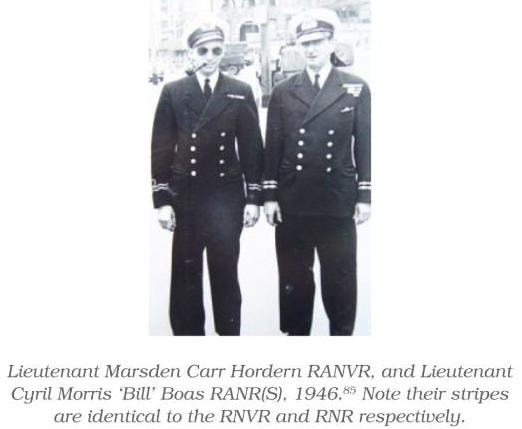
The RAN was made up of Permanent Navy (PN), and three Reserve Australian naval forces (RANR(S), RANR, and RANVR).
The RANR(S) officer uniforms wore the same cuff stripes (i.e. 'chain' stripes) as the RNR (1907-1951).
The RANR officers (1913-1921) wore the same uniform as the PN but with wavy lace with red stripe. Then in 1921-1951 they had wavy lace with a square loop and red stripe.
The RANVR officers (1921-1951) wore the same uniform and square looped wavy lace as the RANR officers.
All three RAN reserves wore the standard RAN buttons.
In 1973, all three reserve forces amalgamated into a single RANR, with the officer cuff stripes changing to the Permanent Naval (PN) pattern with the same 'R' within the executive curl as the RNR. The 'R' was abolished in 1986, leaving RANR officers with the same uniform as PN officers.
The Permanent Naval Forces 'Civil Branch' Medical Officers of the RAN wore gold lace (no executive curl) with distinctive red scarlet cloth (1911 to 1918):
The RANR(S) officer uniforms wore the same cuff stripes (i.e. 'chain' stripes) as the RNR (1907-1951).
The RANR officers (1913-1921) wore the same uniform as the PN but with wavy lace with red stripe. Then in 1921-1951 they had wavy lace with a square loop and red stripe.
The RANVR officers (1921-1951) wore the same uniform and square looped wavy lace as the RANR officers.
All three RAN reserves wore the standard RAN buttons.
In 1973, all three reserve forces amalgamated into a single RANR, with the officer cuff stripes changing to the Permanent Naval (PN) pattern with the same 'R' within the executive curl as the RNR. The 'R' was abolished in 1986, leaving RANR officers with the same uniform as PN officers.
The Permanent Naval Forces 'Civil Branch' Medical Officers of the RAN wore gold lace (no executive curl) with distinctive red scarlet cloth (1911 to 1918):
Surgn Commander : Surgn Lieutenant Commander : Surgn Lieutenant : Surgn Probationer
The RANR(S) officer uniforms wore the same cuff stripes (i.e. 'chain' stripes) as the RNR (1907-1951):
Surgn Commander : Surgn Lieut Commander : Surgn Lieutenant : Surgn Probationer
The RANR (from 1913) had uniforms of similar pattern as the Permanent Naval forces for both ratings and officers. The ratings uniform had red machine embroidered badges and wore a black tally band with the title "ROYAL AUSTRALIAN NAVAL RESERVE" or "R.A.N. RESERVE" or "R.A.N.R." in gold lettering. The officer's uniform was the same as that of the Royal Naval Reserve with the addition of RAN buttons and in the case for 'Civil Branch' Medical officers wore distinctive gold 'wavy' lace with scarlet badge cloth:
Staff Surgeon Surgeon Surgeon Probationer
By 1918 all officers of the civil branches adopted the executive curl to their cuff lace for all uniform Classes:
Commodore : Surgn Captain : Surgn Commander : Surgn Lieutenant Commander : Surgn Lieutenant : Sub Lieutenant
About 1921, RANR officers adopted the same rank lace as that worn by officers of the RNVR. This was promulgated in the 1931 Naval Reserve Regulations stating that the uniform of an officer of the RANR shall be of the same pattern as that of officers of corresponding rank in the Permanent Naval Forces with the exception that the RANR adopted the same rank lace and pattern as that worn by officers of the Royal Navy Volunteer Reserve (i.e. RANR officers cuff lace changed from the wavy lace pattern to a wavy lace with a square loop pattern - with scarlet cloth indicating medical branch):
1921 Royal Australian Navy Reserves
Surgeon Lieutenant Commander : Surgeon Lieutenant : Sub Lieutenant (this worn by Physiotherapy Officers)
Surgeon Lieutenant Commander : Surgeon Lieutenant : Sub Lieutenant (this worn by Physiotherapy Officers)
In 1921 a new Reserve branch was created, the Royal Australian Navy Volunteer Reserve (RANVR), that consisted of professional sea-going men that took up naval training. The RANVR consisted of officers and seamen who were not bound in time of peace to continuous naval service, and were not paid for their service. Ratings could serve up to the age of 55 years, while officers were 58 years. Uniforms were supplied at government expense and were the same pattern as the permanent naval force with the exception that ratings wore "R.A.N. VOLUNTEER RESERVE" or "R.A.N.V.R." on their cap ribbons. By 1925 red and blue cotton embroidered badge for ratings was introduced and in 1926 regulations stipulated that uniforms worn by officers was to be the same as the corresponding rank in the RAN with the following exceptions; the cap badge displayed 'R.A.N.V." above the anchor, and the gold lace was the same pattern to the RANR - with scarlet cloth between the Officers lace indicating medical branch:
1921 Royal Australian Navy Volunteer Reserves
Surgeon Lieutenant Commander : Surgeon Lieutenant : Sub Lieutenant
Surgeon Lieutenant Commander : Surgeon Lieutenant : Sub Lieutenant
in 1951 King George VI consented to the abolition of this wave form cuff lace worn by officers of the RNR and RNVR and was replaced with the straight stripes (with scarlet cloth for medical) of the permanent naval forces but with the addition of a letter 'R' for 'Reserves' in the centre of the executive curl. This was adopted by the RAN reserve forces for both the cuff rank and shoulder epaulettes.
1951 Officers cuff lace for Royal Australian Navy Reserve
Commodore : Surgn Captain : Surgn Commander : Surgn Lieutenant Commander : Surgn Lieutenant : Sub Lieutenant
Commodore : Surgn Captain : Surgn Commander : Surgn Lieutenant Commander : Surgn Lieutenant : Sub Lieutenant
Permanent Royal Australian Navy medical officers continued to wear the gold lace with executive curl and scarlet cloth on their sleeves and epaulettes (i.e. without the 'R').
The traditional style of uniform has changed little since WW2 for both Officers and Other Ranks, and it is only recently that a camouflage uniform has been brought into service for general duties. Medical officer epaulettes still retain the scarlet cloth between the lace to indicate their branch and both ratings and officers have AUSTRALIA on the end of the epaulette (see photos below).
Sick Berth Attendants (British and Australia)
Up until the mid 1800's, ratings were still without a standard uniform. How ship’s companies would be dressed came down to the commanding officer’s personal choice. With the revolution in naval affairs that transformed the Royal Navy from sail to steam, wood to iron the raise of branches also stimulated the difference in uniforms for officers and ratings as well as officers and ratings by individual branches. Uniforms for Ratings was first established by the Admiralty in 1857, which consisted of a sailor suit or Naval Rig. The Rig consisted of a blue jean collar with three white stripes. Bell bottom trousers were designed so that they could be rolled up easily when scrubbing decks. These trousers had either seven or five creases depending on the length of the sailor's leg. Furthermore, the number of buttons were specified to be six versus eight buttons grouped in fours for officers as another mark of distinction.
In the 19th century the Junior Rates cap developed into a waterproof tarpaulin hat similar to a boater but covered in tar from 1820-1857 [a possible origin of the name Jack Tar], with the names of ships or ship’s badges painted onto the hat. In 1860 a new sailor’s round cap was introduced which is still in use today. Cap tallies were introduced with the ship’s name in gilt letters. In tropical climates from 1860 a wide-brimmed straw had known as a Sennet became popular and remained in use until 1921 when they were withdrawn from issue.
CPOs & POs as senior rates were allowed to wear similar peaked cap to that worn by officers. The cap badge was given to CPO’s in 1879 when they changed uniform from the ‘Square rig’ [as worn by junior ratings] to a ‘Fore and Aft rig’ [as worn by officers] and consisted of a fouled anchor with an oval surmounted by a crown.
Sick Berth Attendants initially wore the same 'square rig' as seaman branch personnel until 1879, when Sick berth Stewards First Class and above wore 'fore-and-aft rig' with a double-breasted jacket, tie & peak cap, and while Wardmasters wore a single-breasted long frock coat. White tunics were worn on hospital wards. The surrounding oak leaves on the CPO arm badge were also replaced by laurel at this time until 1890 when it was abolished. The black horn buttons on their jackets were changed to gilt and their rate badges were moved from the right upper arm to both jacket lapels. This became known as 'Class I' rig, which was worn by all 'civil branch' (non-seamen) CPO and PO equivalents.
Thus, in 1890, the RAN followed the new RN uniform regulations, and stated that all CPO fore-and-aft jackets would acquire gilt buttons and become the 'Class I' rig, while the square rig became the 'Class II' uniform worn by 'military branch' seaman personnel. 'Class III' uniform referred to fore-and-aft double-breasted jackets with black horn rather than gilt buttons, ties and peak caps for wear by non-seamen 'civil branch' junior sailors such as Junior Sailor Sick Berth Stewards (i.e. medical; but also artificer engineering sailors - which may explain why RAN Medical Staff are often referred today as 'sickbay tiffs') and dental personnel. Class III rigs for male medical and dental junior sailors were abolished in the RAN in 1959.
The coronation of King Edward VII in 1901 led to the ST Edward's crown on all Navy badges replaced by the Tudor crown. In 1907, the Second Class PO rank was abolished.
In 1919, CPOs received a new cap badge, based on their pre-1890 arm badge, while POs received the previous CPO cap badge, which is still worn to this day.
In 1920 the RAN introduced dental mechanics, and the following year all medical and dental sick berth stewards were renamed Sick Berth Attendants (SBA). In 1925 dental rates were issued 'bluette' (medium blue) working overalls. In 1948 dental sailors were split from medical SBAs into their own branch.
In 1925, CPO were also given three ornamental cuff buttons (hawking back to securing 'turn-back' sleeve cuffs on a range of Navy uniforms during the previous century.
The coronation of Queen Elizabeth II in 1953 resulted in all Navy badges reverting to an updated St Edward's crown.
RAN uniforms followed RN practice until 1966 when 'Australia' flashes were added to both shoulders. The rank of Warrant Officer was added above that of CPO in 1971, while the rank of Able Seaman received its own dedicated badge to differentiate them from the Seaman rank in 1993.
All day-to-day or 'working' square rig and fore-and-aft rig uniforms had red badges until 1990. RAN winter ceremonial uniforms have since had only gold badges, while summer uniforms or 'whites' continue to have dark blue badges.
In 1953, the RAN replaced the white jackets for medical (and dental) sailors undertaking patient duties with the current white ward working dress.
The current soft rank insignia (SRI) slides for these and other uniforms have used embroidered 'old gold' coloured thread since 1991. Matching camouflaged SRIs were used with the grey Proban overalls, and Australian Multicam Camouflage Uniform (AMCU).
In 1974, RAN SBAs (and dental assistants) were renamed Medical (and Dental) sailors. All square rig and fore-and-aft rig uniforms for office duties were replaced by 'Battledress rig' in 1998.
The traditional style of uniform has changed little since WW2 for both Officers and Other Ranks, and it is only recently that a camouflage uniform has been brought into service for general duties. Medical officer epaulettes still retain the scarlet cloth between the lace to indicate their branch and both ratings and officers have AUSTRALIA on the end of the epaulette (see photos below).
Sick Berth Attendants (British and Australia)
Up until the mid 1800's, ratings were still without a standard uniform. How ship’s companies would be dressed came down to the commanding officer’s personal choice. With the revolution in naval affairs that transformed the Royal Navy from sail to steam, wood to iron the raise of branches also stimulated the difference in uniforms for officers and ratings as well as officers and ratings by individual branches. Uniforms for Ratings was first established by the Admiralty in 1857, which consisted of a sailor suit or Naval Rig. The Rig consisted of a blue jean collar with three white stripes. Bell bottom trousers were designed so that they could be rolled up easily when scrubbing decks. These trousers had either seven or five creases depending on the length of the sailor's leg. Furthermore, the number of buttons were specified to be six versus eight buttons grouped in fours for officers as another mark of distinction.
In the 19th century the Junior Rates cap developed into a waterproof tarpaulin hat similar to a boater but covered in tar from 1820-1857 [a possible origin of the name Jack Tar], with the names of ships or ship’s badges painted onto the hat. In 1860 a new sailor’s round cap was introduced which is still in use today. Cap tallies were introduced with the ship’s name in gilt letters. In tropical climates from 1860 a wide-brimmed straw had known as a Sennet became popular and remained in use until 1921 when they were withdrawn from issue.
CPOs & POs as senior rates were allowed to wear similar peaked cap to that worn by officers. The cap badge was given to CPO’s in 1879 when they changed uniform from the ‘Square rig’ [as worn by junior ratings] to a ‘Fore and Aft rig’ [as worn by officers] and consisted of a fouled anchor with an oval surmounted by a crown.
Sick Berth Attendants initially wore the same 'square rig' as seaman branch personnel until 1879, when Sick berth Stewards First Class and above wore 'fore-and-aft rig' with a double-breasted jacket, tie & peak cap, and while Wardmasters wore a single-breasted long frock coat. White tunics were worn on hospital wards. The surrounding oak leaves on the CPO arm badge were also replaced by laurel at this time until 1890 when it was abolished. The black horn buttons on their jackets were changed to gilt and their rate badges were moved from the right upper arm to both jacket lapels. This became known as 'Class I' rig, which was worn by all 'civil branch' (non-seamen) CPO and PO equivalents.
Thus, in 1890, the RAN followed the new RN uniform regulations, and stated that all CPO fore-and-aft jackets would acquire gilt buttons and become the 'Class I' rig, while the square rig became the 'Class II' uniform worn by 'military branch' seaman personnel. 'Class III' uniform referred to fore-and-aft double-breasted jackets with black horn rather than gilt buttons, ties and peak caps for wear by non-seamen 'civil branch' junior sailors such as Junior Sailor Sick Berth Stewards (i.e. medical; but also artificer engineering sailors - which may explain why RAN Medical Staff are often referred today as 'sickbay tiffs') and dental personnel. Class III rigs for male medical and dental junior sailors were abolished in the RAN in 1959.
The coronation of King Edward VII in 1901 led to the ST Edward's crown on all Navy badges replaced by the Tudor crown. In 1907, the Second Class PO rank was abolished.
In 1919, CPOs received a new cap badge, based on their pre-1890 arm badge, while POs received the previous CPO cap badge, which is still worn to this day.
In 1920 the RAN introduced dental mechanics, and the following year all medical and dental sick berth stewards were renamed Sick Berth Attendants (SBA). In 1925 dental rates were issued 'bluette' (medium blue) working overalls. In 1948 dental sailors were split from medical SBAs into their own branch.
In 1925, CPO were also given three ornamental cuff buttons (hawking back to securing 'turn-back' sleeve cuffs on a range of Navy uniforms during the previous century.
The coronation of Queen Elizabeth II in 1953 resulted in all Navy badges reverting to an updated St Edward's crown.
RAN uniforms followed RN practice until 1966 when 'Australia' flashes were added to both shoulders. The rank of Warrant Officer was added above that of CPO in 1971, while the rank of Able Seaman received its own dedicated badge to differentiate them from the Seaman rank in 1993.
All day-to-day or 'working' square rig and fore-and-aft rig uniforms had red badges until 1990. RAN winter ceremonial uniforms have since had only gold badges, while summer uniforms or 'whites' continue to have dark blue badges.
In 1953, the RAN replaced the white jackets for medical (and dental) sailors undertaking patient duties with the current white ward working dress.
The current soft rank insignia (SRI) slides for these and other uniforms have used embroidered 'old gold' coloured thread since 1991. Matching camouflaged SRIs were used with the grey Proban overalls, and Australian Multicam Camouflage Uniform (AMCU).
In 1974, RAN SBAs (and dental assistants) were renamed Medical (and Dental) sailors. All square rig and fore-and-aft rig uniforms for office duties were replaced by 'Battledress rig' in 1998.
medical branch seamen ranks
Medical Branch Seamen ranks were:
For Petty Officers a Long service & Good conduct chevrons were worn just below the anchor(s) depending on yeas of service.
- Sick Berth Attendant Probationer (Ordinary Seamen equivalent): red cotton embroidered Geneva Cross on the right sleeve.
- Sick Berth Attendant (Able Seamen equivalent): red cotton embroidered Geneva Cross on the right sleeve.
- Leading Sick Berth Attendant (Leading Seamen equivalent): a red cotton embroidered fouled anchor and conduct stripes.
- Sick Berth Petty Officer (Petty Officer equivalent): a ringed anchor and crown cap badge, and two red cotton embroidered fouled anchors with a crown and conduct stripes.
- Sick Berth Chief Petty Officer (Chief Petty Officer equivalent): a wreathed cap badge and crown cap badge, and three gold RAN buttons on both cuffs.
For Petty Officers a Long service & Good conduct chevrons were worn just below the anchor(s) depending on yeas of service.
Seamen's uniform after 1890
In 1890 there were three Classes of naval uniform worn by Seamen and under each class there were three subclasses of Dress;
1. Class I: worn by all Chief Petty Officers - their fore-and-aft jackets acquired gilt buttons and became the Class I rig.
1. Class I: worn by all Chief Petty Officers - their fore-and-aft jackets acquired gilt buttons and became the Class I rig.
- Number 1 dress (for dress wear and more formal occasions),
- Working Dress (for every day use), and
- White Tunic (for summer wear or in hot climates).
- Number 1 dress (for dress wear and more formal occasions),
- Working Dress (for every day use), and
- White Tunic (for summer wear or in hot climates).
- Number 1 dress (for dress wear and more formal occasions),
- Working Dress (for every day use), and
- White Tunic (for summer wear or in hot climates).
|
Class I.
Was worn by Military Branch and Civilian Medical Branch Chief Petty Officers. Subclasses: No 1 double-breasted coat for dress wear (formal occasions) -also known as the "long jacket" because it was longer than the waist-length seaman's jacket of the nineteenth century. Working Dress for every day wear and white tunic for summer. Note: medical branch Chief Petty Officers did not wear Class I. |
|
Class II. Known as the 'square rig', this is the traditional sailor's uniform worn by what were termed "men dressed as seamen" (i.e. petty officers and lower ranks of the Military, Stoker, and Artisan (except for shipwrights) ratings).
Subclasses: No 1 Dress, Working Dress, and White jumper. Note that the medical branch petty officers and ratings did not wear the Class II square rig. |
INSIGNIA
The ranks of Second and First Class Petty Officer (PO) were formally established in 1827. These sailors received red badges on their left upper arm: a plain anchor for 2nd Class PO, and an anchor and crown for 1st Class PO. In 1853, the Leading Seaman (LS) rank was added below PO, and Chief Petty Officer (CPO) above PO. Rank badges are displayed below:
The ranks of Second and First Class Petty Officer (PO) were formally established in 1827. These sailors received red badges on their left upper arm: a plain anchor for 2nd Class PO, and an anchor and crown for 1st Class PO. In 1853, the Leading Seaman (LS) rank was added below PO, and Chief Petty Officer (CPO) above PO. Rank badges are displayed below:
INSIGNIA - medical branch
Peak cap embroidered badges
left upper sleeve ensignia
Petty Officer First Class
Petty Officer Second Class
Leading Seamen
good conduct badges left upper sleeve insignia
Chevrons on the left arm were introduced below the rank badge to recognise good conduct in 1849. From 1860, up to three stripes were awarded after three, eight, and thirteen years service (4, 8, and 12 years from 1950). These good conduct stripes were linked to pay increments in the RAN until 1971 when they de-linked and renamed Long Service Badges.
trade badge worn on the right upper sleeve
RN sick berth attendants have worn a red cross on the right upper arm since 1879, while Australian colonial and RAN medical sailors did likewise until 1974. RAN dental sailors had their own rate badge from 1922 until 1942, when it was replaced by the SBA badge with a 'D' for dental assistant and 'DM' for dental mechanic badge above. On forming into their own branch in 1948, dental rates reverted to their previous bade the following year.
Both medical and dental rate badges changed to the present caduceus insignia in 1974. Of note is that the caduceus of a winged staff entwined by two serpents was first misapplied by the US Army's Medical Corps for its badge in 1902, rather than the correct medical symbol of the Rod of Asclepius consisting of a single serpent entwined around a staff without wings.
The RAN has a long history of specialist health sailors or 'sub-rates', the number and nature of which has varied depending on requirements. At present, the RAN only has underwater medicine or 'U' rates and a small number of 'O' or theatre rates.
Both medical and dental rate badges changed to the present caduceus insignia in 1974. Of note is that the caduceus of a winged staff entwined by two serpents was first misapplied by the US Army's Medical Corps for its badge in 1902, rather than the correct medical symbol of the Rod of Asclepius consisting of a single serpent entwined around a staff without wings.
The RAN has a long history of specialist health sailors or 'sub-rates', the number and nature of which has varied depending on requirements. At present, the RAN only has underwater medicine or 'U' rates and a small number of 'O' or theatre rates.
Specialist Medical personnel were further distinguished by letter above the Geneva Cross:
Laboratory Assistant (letter L] Masseur [M] Operating Room Assistant [O] X-Ray Assistant [X] Dental Surgery Attendant [D] Dental Mechanics [DM]
ran medical sailor rank and rate badges summary chart
RAN Medical Officer Ranks and Insignia since 1911
Royal Australian Navy Wardmaster / Medical Administration Officer Ranks and insignia since 1926
Royal Australian Navy Wardmaster / Medical Administration ranks:
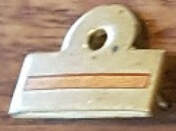
Ward master (later Medical Administration Officer) SBLT and LEUT collar rank insignia with salmon pink distinction colour, worn on khaki shirt collars in the early 1970s.

RAN Wardmaster Lieutenant shoulder board, 1974.
'Australia' flashes have been removed and recycled on promotion by the owner.
Note the (faded) salmon pink distinction cloth.
RN and RAN Sailor Rank Insignia for Medical personnel since 1827
RN and RAN Medical Sailor Rate Badges since 1879
RAN Soft Rank Insignia (SRI) shoulder slides from 1988.
|
RAN shoulder slides. Top far left: RAN Surgeon Lieutenant (replaced in 1991 by current 'Old Gold' slides). Top left: 1988 RN Surgeon Lieutenant Commander shoulder slide, modified by added 'Australia' flashes. Bottom far left: Current 'Old Gold' shoulder slide, introduced in 1991. Bottom left: RAN Commander MO shoulder slide, introduced in 1988 for wear with the Proban overalls introduced in 1992. These were abolished with the introduction of Disruptive Pattern Naval Uniform (DPNU) in 2009. |
Dental Officers
The first permanent uniformed dental officer of any Commonwealth Navy (Surgeon Dentist Milton Spencer Atwill) was appointed into the RAN in April 1918. Dentists wore the same uniform as medical officers, apart from orange instead of red distinction cloth (see table below). They received the same ‘Surgeon’ rank prefix as medical officers from 1918, with the rank suffix (Dental) until both of these titles were abolished in the RAN in 1992.
The first permanent uniformed dental officer of any Commonwealth Navy (Surgeon Dentist Milton Spencer Atwill) was appointed into the RAN in April 1918. Dentists wore the same uniform as medical officers, apart from orange instead of red distinction cloth (see table below). They received the same ‘Surgeon’ rank prefix as medical officers from 1918, with the rank suffix (Dental) until both of these titles were abolished in the RAN in 1992.
FEMALE MEDICAL SAILORS
WRANS officer uniforms consisted of a double-breasted jacket with gilt buttons, matching skirt, and tricorn hat.
Forty-four female health sailors served from 1941 - 1948 in the Women's Royal Australian Naval Service (WRANS).
Female medical sailors wore winter uniform that was a feminised Class III jacket, matching skirt, and broad-brimmed felt hat with the same cap badge as worn by males. A blue summer frock with a white belt and collar was introduced in 1942, which was replaced in 1943 until 1953 by a khaki dress.
In 1951 Female SBAs were recruited into the WRANS, and apart from the felt hat, the postwar winter WRANS uniform was similar to the war time version. Those doing ward duty wore a medium blue dress with rank badges, white apron and nurses cap the apron and cap was abolished in the 1970s).
In 1985 the WRANS were incorporated into the RAN, and in 1991 the 'WRAN' sailor rank titles were abolished in lieu of those used by males.
Since 1993, Female senior sailors wore a tricorn cap, while RAN female junior sailors wore the same caps as males.
In 1994 the medium blue dress was abolished in lieu of the 'medics' whites' as worn by males.
Like all other WRANS, female medical sailors who joined before 1983 did not have a seagoing obligation. This precluded their need for action working dress until 1992. Since then female sailors have worn the same uniforms as their male counterparts, apart from skirts as an alternative to trousers for some uniforms.
WRANS officer uniforms consisted of a double-breasted jacket with gilt buttons, matching skirt, and tricorn hat.
Forty-four female health sailors served from 1941 - 1948 in the Women's Royal Australian Naval Service (WRANS).
Female medical sailors wore winter uniform that was a feminised Class III jacket, matching skirt, and broad-brimmed felt hat with the same cap badge as worn by males. A blue summer frock with a white belt and collar was introduced in 1942, which was replaced in 1943 until 1953 by a khaki dress.
In 1951 Female SBAs were recruited into the WRANS, and apart from the felt hat, the postwar winter WRANS uniform was similar to the war time version. Those doing ward duty wore a medium blue dress with rank badges, white apron and nurses cap the apron and cap was abolished in the 1970s).
In 1985 the WRANS were incorporated into the RAN, and in 1991 the 'WRAN' sailor rank titles were abolished in lieu of those used by males.
Since 1993, Female senior sailors wore a tricorn cap, while RAN female junior sailors wore the same caps as males.
In 1994 the medium blue dress was abolished in lieu of the 'medics' whites' as worn by males.
Like all other WRANS, female medical sailors who joined before 1983 did not have a seagoing obligation. This precluded their need for action working dress until 1992. Since then female sailors have worn the same uniforms as their male counterparts, apart from skirts as an alternative to trousers for some uniforms.
australian naval uniform gallery
1893 Victorian Naval regulations gallery (as worn by volunteer reserve Naval Brigades of Australia)
These Victorian Naval Regulations pertained to both the RN and to the fledgling volunteer citizen reserve Naval Brigades of the naval forces of Australia. As such, since the Naval Brigades were volunteer reserves, the cuff rank for medical surgeons was as for the RN reserve cuff lace consisting of interlocking gold bands with scarlet cloth: and Medical peak braid (Civil Branch):
COLONIAL PERIODPre-federation 1870 -1900.
Naval Medical Officers wore the Victorian Royal Navy pattern Uniform consisting of an open neck, mid-thigh length double breasted dark blue/black coat, having a double row of brass fouled anchor buttons, and gold rings to both cuffs denoted the wearer's rank. A white shirt and black tie, long dark blue/black trousers and black leather shoes completed the uniform, together with a 'pork pie' style visor cap with an embroidered QVC wreath to the front. A Petty Officer wore a Reefer jacket, with the rank displayed on the left upper sleeve and the Geneva Cross on the right upper sleeve. A white shirt, long dark blue/black trousers and a 'pork pie' visor cap with an embroidered QVC above an anchor completed the uniform. The ratings of NSW Naval Brigade stretcher bearers wore the standard blue/black wool jumper with blue cotton collar over a white collarless shirt (with a blue neck ring), and trousers. Brown leather ankle boots with khaki gaiters, and a white top naval 'pork pie' cap was worn with a tally band. FEDERATIONWW1 Medical Officers
Royal Australian Naval Officers wore a jacket that was a double-breasted, thigh length black woollen jacket, and having two rows of gold fouled anchor buttons to the front. A high standing collar white shirt and black tie was worn. Long black trousers were worn, together with black shoes. Officers had gold rings to both lower sleeves, the number depending on their rank. Medical Officers were distinguished by Scarlet wool inserts between the gold lace on the sleeves or as a base on their epaulettes. These sleeve rings were 'wavey' for Naval Reserve Officers (RANR). A black peak cap with or without gold embroidery on the peak, depending on rank, was worn, having a large gold bullion embriodered crowned wreath and metal achor badge to the centre of a mohair cap band. A white cotton cover over the cap's crown was also often worn. WW1 Petty Officers
Petty Officers wore a Reefer jacket that was a double-breasted, thigh length black woollen jacket, having two rows of gold fouled anchor buttons to the front, and for Chief Petty Officers (CPO) three buttons on both cuffs. Petty Officers had a fouled embroidered anchor sewn to the left upper sleeve, and on the right sleeve an embriodered Geneva Cross in a circle. A white cotton shirt, black tie, long black trousers and black shoes completed the uniform. A black peaked cap with an anchor in a crowned circle was worn. WW1 Royal Australian Navy Sick Berth Attendants (SBA)
Sick Berth Attendants wore a Reefer jacket that was a double breasted, thigh length, black woolen jacket having two vertical rows of black fouled anchor buttons with 'AUSTRALIA'. A Medic Trade badge of a Geneva Cross within a red circle all in cotton thread was worn on the right upper sleeve. A black wool toped peaked cap, with the option of a white cover, having a red worsted crown and anchor hat badge to the center band indicated their trade. A white shirt, black tie, black wool long trousers, and black shoes completed the attire. Royal Australian Naval Bridging Train (RANBT). 1915.
The RANBT was the most highly decorated Royal Australian Navy unit during WW1. It was formed in Melbourne on 28 February 1915 and was manned by reservists. Three hundred were selected, and began training in horsemanship, engineering, and pontoon bridging. Once deployed they acted as an engineering unit to support the British landings at Suvla Bay on the Gallipoli Peninsula. Dr Edward Walter Morris was the unit's Medical Officer. As Dr Morris was working on land, he wears a khaki uniform rather than the blue/black naval uniform. This would be less conspicuous to enemy observation. He wears the WW1 khaki pattern Service Dress tunic with the rank of Staff Surgeon on both epaulettes and an officer's Naval pattern bullion insignia sewn onto the front of his khaki peak cap. Khaki jodhpurs, brown leather gaiters and boots with spurs. 1922 Australian Royal Navy Surgeon Commanders Full Dress
A Fore-Aft hat of fine black felt, with golden wire end tassels and cord to its left side. The waist length jacket with tails had a standing neck with golden lace, golden lace to both cuffs, and golden fringed epaulettes displaying the wearer's rank. Long black wool trousers, black leather shoes, and a ceremonial brocade belt & sword completed the uniform. WW2 Medical Officers
The hat is made of black wool, with a black wool peak and golden wire leaves. The hat could be fitted with a white cotton top. A gold bullion Kings Crown wreath and anchor was to the front attached to a mohair band. A thin chin strap was secrured by two small buttons at the side of the hat. The Reefer jacket and trousers were made in three grades of wool - heavy melton 'doe skin' wool to a light weight material. Rank was displayed on both cuffs with gold rings, the upper ring having a loop. Red wool between these rings indicated the Branch of Service in the Navy - Red being for Sureons. Eight brass fouled anchor buttons with 'AUSTRALIA' were sewn to the front - one set of fore secured the jacket closed, and the other for adornment. WW2 Petty Officers
Not much had changed to the uniform since the RAN inception. Petty Officers wore a Reefer jacket that was a double-breasted, thigh length black woollen jacket, having two rows of gold fouled anchor buttons with 'AUSTRALIA' to the front, and for Chief Petty Officers (CPO) three buttons on both cuffs. Petty Officers had a fouled embroidered anchor sewn to the left upper sleeve, and on the right sleeve an embriodered Geneva Cross in a circle. A white cotton shirt, black tie, long black trousers and black shoes completed the uniform. A black peaked cap with an anchor in a crowned circle was worn. WW2 Sick Berth Attendants
Sick Berth Attendants wore a Reefer jacket that was a double-breasted, thigh length black woollen jacket, having two rows of black fouled anchor buttons with 'AUSTRALIA' to the front. A Medic Trade badge of a Geneva Cross was worn on the right upper sleeve. A white shirt, black tie, long dark blue/black trousers and black leather shoes completed the uniform. A plain black peak cap was worn. WW2 Grey, White, and Khaki uniforms
On general duties (day to day work) Officers and SBA could wear grey or white shirts with the appropriate rank displayed, together with either long trousers or shorts. WW2
Australian Naval Officers had a 'walking out' uniform when not on board the ship. This consisted of a high collar jacket, trousers and white shoes. Rank eppaulette boards were worn on the shoulders. A white topped peak cap was worn with this uniform. WW2 FEMALE MEDICAL SAILORS
1941 WRANS wore a Working Dress and an Outdoor uniform. The Working Dress consisted of a below the knee whort sleeved white dress, having a Geneva cross in a circle sewn to the right sleeve. A white cap and lack leather shoes completed the uniform. The Outdoor uniform consisted of a waist length double breasted black wool jacket, skirt and leather shoes, white shirt and black tie and a black felt hat. On the right upper sleeve was sewn a Geneva Cross within a circle, and on the left upper sleeve the wearer's rank if any. WRAN SBA ward and outdoor uniforms, November 1945. Note the Geneva crosses on the right arm, and wartime outdoor wide-brimmed felt hat. Women’s Royal Australian Naval Service Ranks Titles and Equivalents, 1951–91 1944. WRANS tropical khaki uniform.
WW2
Naval Hospital In-patients wore a black light woool single breasted jacket and trousers. 1952 Korean War and 1968 Vietnam War
The Officer's and SBA white general duties and walking out uniforms remained unchanged except for the change to the cap and rank badges from a Kings Crown to a Queens Crown. Grey shirts and shorts / trousers continued to be worn with the various Trade and rank badges, and the 'AUSTRALIA' title, sewn in position. WRAN SBA outdoor summer uniform, 1950s-60s. Note
the white gloves and female-pattern, flat wide-diameter cap (Sea Power Centre – Australia) SBAs wore a rank badge on the left arm and a rate badge on the right arm.
WRANS winter uniform, 1970s-90s. Note the tall reduced diameter
female-pattern cap (Sea Power Centre – Australia). WRANS SBA ward uniforms, 1972 (Lorraine Grey)
ABMED Erin Matterson, HMAS Tobruk, 200844 Note the
square rig uniform and same cap worn by males. 1981. Medic's whites.
1988. Action Working Dress worn by POMED Glen ‘Wacka’
Payne and ABMED Darren Penny, HMAS Derwent. Note the rank badge on the left arm, the post-1974 rate badge on the right arm, anti-flash hoods and gloves. (Sea Power Centre – Australia) WRMEDs Cathy Kerwick and Rachel Smith, and SMNMED
Doug Doherty, Phase 3 Medics Course, HMAS Cerberus Medical Training School, 1988 (Steven Carroll) Proban® overalls, worn by ABMED Trent Crossdale,
HMAS Warramunga Current
A DCPU was introduced into service which consisted of a 'coat' and trousers. The 'coat' has Velcro patches to affix various insignia. On the epaulettes slip on rank slides with red inserts show the rank of the wearer. Disruptive Pattern Naval Uniform (DPNU) worn by LSMED SM Kerrin Lyon, Royal North Shore Hospital. Note the (unofficial) submariner and medical rate badges on the name tag. The white walking out uniform continues to be worn to this day.
Winter utility jacket or battledress rig for office-type
duties, 2017. Note the similar cut to the 19th century ‘bluejacket rig’. |
|
|
RANNS
Nursing officiers, physiotherapists, and microbiologists served in the wartime Royal Australian Navy Nursing Service (RANNS) from 1942 to 1948. They had the same rank structure used by the RN Queen Alexandra Royal Naval Nursing Service (QARNNS), while their uniform was similar to WRANS officers except they wore the 'Wavy Navy' gold stripes and maroon distinction cloth (as for Wardmasters at the time). |
|

